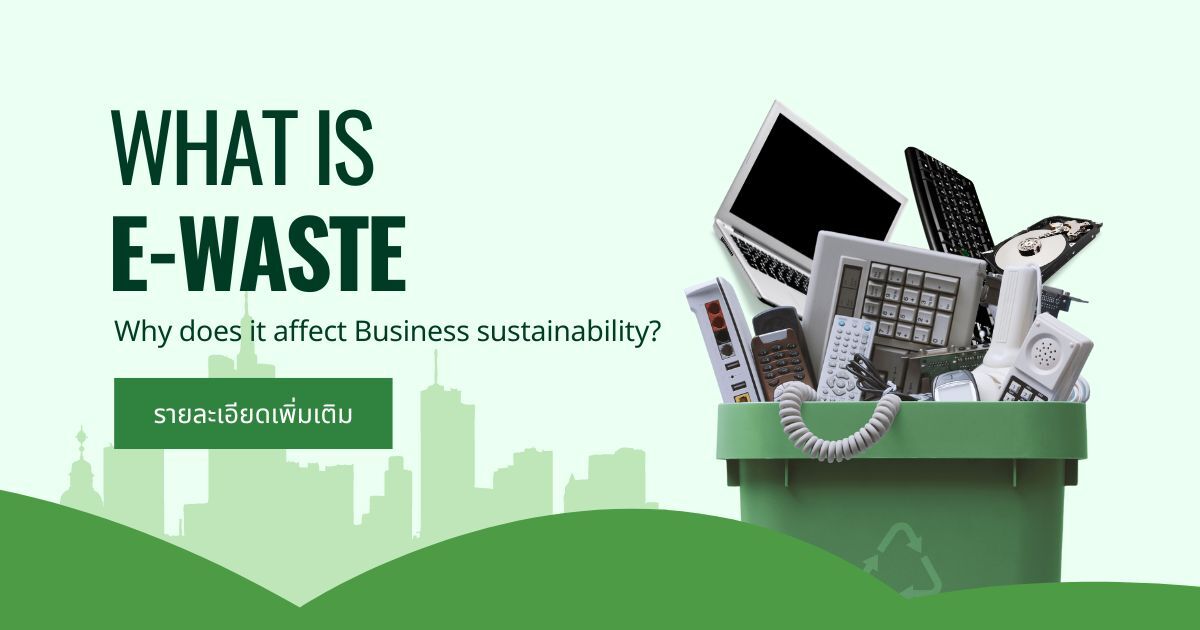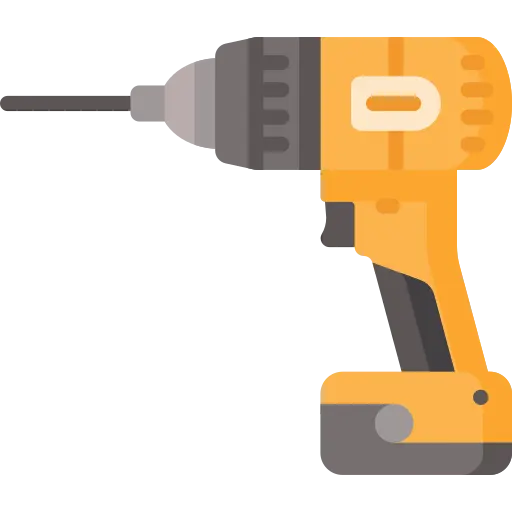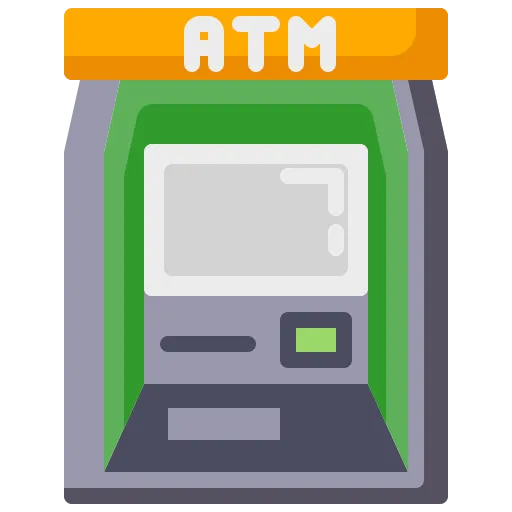What is E-waste?
E-waste refers to electronic waste, such as computers, monitors, tablets, printers, and mobile phones, as well as various other electronic devices and appliances used extensively in households and businesses. When these products become faulty, expired, obsolete, or no longer useful to users, they are discarded and become electronic waste, or “e-waste,” on this planet.
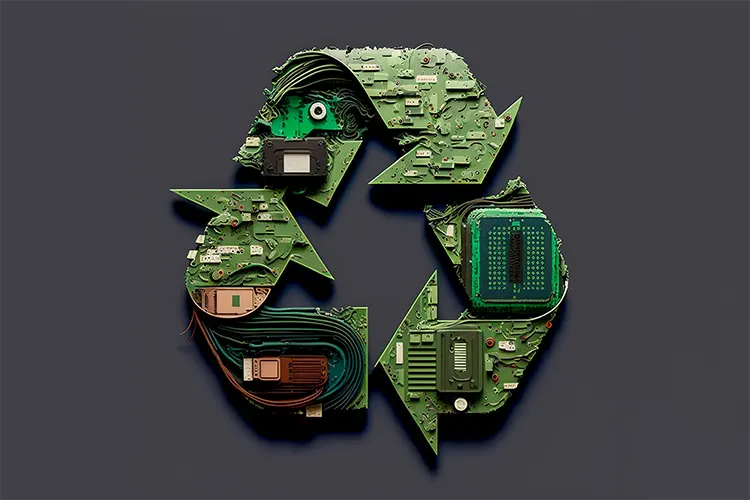
E-waste is categorized into a total of 10 types
Referring to EU’s WEEE (Waste from Electrical and Electronic Equipment) regulations.
E-waste‘s Impact Businesses Should Be Aware Of!

According to the UN Global E-waste Monitor ปี 2020 report, e-waste is highlighted as one of the world’s fastest-growing waste categories. This is mainly due to rapid technological advancements that swiftly replace older electronic devices with newer models. E-waste poses both health risks to humans and environmental hazards. Unfortunately, the rate of proper recycling is very low, despite the potential for materials like cobalt, lithium, copper, and gold to be reused when appropriately separated and recycled.
As an example, in 2019 , the global population generated a staggering 53.6 million metric tons of e-waste, yet only 17.4% of it was recycled. The remaining 82.6% of untreated e-waste represents a significant loss of valuable materials and minerals, amounting to around 1,625.965 billion USD.
Businesses must not overlook
the Sustainability Policy
For both domestic and cross-border business operations, having a clear Sustainability Policy is essential. This encompasses environmental considerations and people care, meeting the demands of stakeholders and catering to the rising interest of modern consumers. Organizations or businesses that prioritize environmental care are poised to receive support. The factor of environmental responsibility has gained increasing importance over the past 2-3 years.
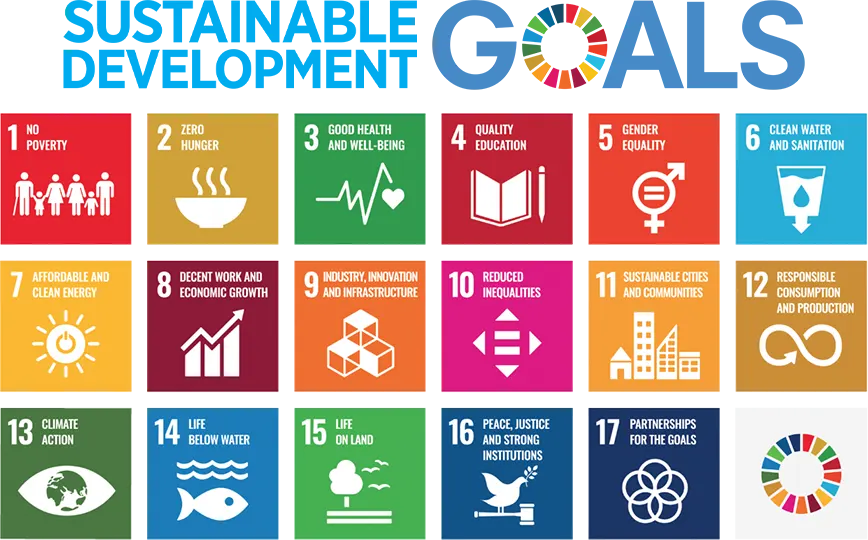
The path to Sustainable Electronics begins with what factors?
When discussing Sustainable Electronics, it’s not solely the responsibility of private sector manufacturers. Rather, it necessitates changes across every stage, from production to distribution, consumption, industry, government, social organizations, and even consumers. Key transformational steps that can be taken include:
Providing E-waste management strategies for businesses.
Specifying E-waste quantities and associated costs
Estimate and specify the annual E-waste quantities your business generates, including an attempt to assess the associated costs for managing this waste. This provides a comprehensive view and understanding of the genuine impact of E-waste on both your company and the environment.
Understanding how to manage E-waste
A key to reducing E-waste is maximizing the efficiency of electronic devices until their end of life. Then, understanding E-waste management methods, such as component separation for reuse and recycling, becomes essential. Seek transparent companies for suitable and holistic management, aiming to avoid contributing to a cycle that harms both the workforce and the environment.
Creating alternatives for a circular economy
As the world transitions from a linear economy to a circular one, various technology companies are beginning to design new products with components that are easily recoverable for future reuse. This involves assessing the product lifecycle, calculating carbon emissions and pollutants associated with recycling e-waste, and changing business approaches to minimize overall environmental impact.
Examining E-waste management changes
Assess how changes in E-waste management impact your company’s sustainability goals. Understand the significant challenges and opportunities that could affect achieving objectives to address E-waste pollution, environmental impact, and global climate change.
AquaOrange’s E-waste service in Thailand

AquaOrange’s e-waste service in Thailand offers comprehensive electronic waste disposal solutions that support businesses in their journey towards business sustainability. The service includes secure data destruction, hard disk wiping, and the proper disposal of computers and electronic devices through a certified e-waste management process. The certified e-waste managing process ensures correct practices. This service encompasses the removal of e-waste such as computers, laptops, and hard disks, allowing businesses to optimize their return on investment in equipment. Furthermore, it reduces related expenses tied to storing unused equipment, freeing up space and resources for the business.
Why should businesses choose to use e-waste services?

Certificate of Destruction

Secure and Safe

Quick and Effective
The various types of IT assets that AquaOrange’s e-waste service provides include:

We support computers
We support laptops
We support hard disks
We support IT hardware, servers, cables, and etc.
What is IT Assets Disposal?
IT Asset Disposition (ITAD) is the process of properly disposing of outdated, surplus, or end-of-life information technology (IT) assets in an environmentally responsible and secure manner. ITAD ensures that electronic devices are managed and disposed of in compliance with laws, privacy regulations, and environmental standards.
In general, the ITAD process typically involves the following steps:

IT asset disposal is crucial for organizations to mitigate risks associated with data breaches, safeguard sensitive information, adhere to privacy regulations, and reduce environmental impact. Partnering with certified ITAD service providers ensures confidence that the disposal process will be carried out securely, ethically, and in accordance with industry best practices.
Guaranteeing the E-waste disposal process with a Certificate.



For customers interested in E-waste service by AquaOrange, providing convenient and swift electronic waste disposal solutions for businesses. Read on for more details.
Interested in AquaOrange’s E-waste service?
Thank you for referencing the information from:
https://blog.pttexpresso.com/sustainable-e-waste-management/Website: https://techsauce.co/news/towards-to-sustainable-electronics-with-circularity/

